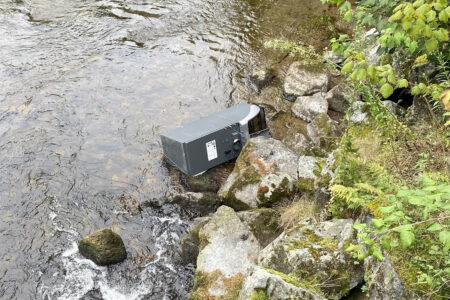Across New York, HELPS program working to streamline entry to government careers
In an effort to fill thousands of vacancies in state and local governments, New York has been running a program that waived tests for many civil service jobs and sped up the hiring process: New York HELPS.
The HELPS program, Hiring for Emergency Limited Placement Statewide, is a temporary exemption that various state and local government agencies can seek for the entry-level jobs they’re seeking to fill.
Rather than requiring applicants to wait for a relevant civil service exam, developing lists of eligible candidates ranked by score and conducting the traditional hiring process that can take months, HELPS allows agencies to take direct applications without tests, and move through the process faster.
State Department of Civil Service Commissioner Timothy R. Hogues implemented the program in April 2023, after Gov. Kathy. Hochul directed him to find a solution to the growing number of open positions in state agencies.
Initially, the aim was to staff up what state bureaucrats call the “O” agencies, the offices tasked with handling core public welfare responsibilities including the Office of Mental Health, Office for People with Developmental Disabilities, the Office of Child and Family Services and others.
“It proved to be a game changer for those agencies that were providing direct care to the individuals of New York state,” Hogues said in an interview Thursday. “It was so successful that other agencies, local governments said they wanted to get involved too.”
Hogues attributes the staffing issues in local government to the COVID-19 pandemic. It drove many people out of their careers, into other areas of the country, and pushed a lot of people to reconsider the jobs they wanted to do.
It became essential to staff up government offices as the vacancies grew, and soon nearly 100 local governments had applied to participate in the HELPS program. In the north country, only St. Lawrence County and Franklin County participate. St. Lawrence has hired 156 people through the HELPS program, and Franklin has hired 66 people.
At the state level, the Office of Mental Health and the Office for People with Developmental Disabilities have hired the most NY HELPS applicants, 5,483 and 7,951 respectively. SUNY follows in third place with 3,564 HELPS hires. The Department of Corrections and Community Supervision, which has been in a protracted staffing crisis since February of this year, has hired 7% of all HELPS applicants at the state level, 2,294.
The state has hired 31,525 people through the HELPS program, including existing state workers who applied for different jobs through it. Local agencies have hired 9,614 people.
“New individuals to the state, it’s close to 20,000 new people,” Hogues said.
But HELPS is temporary. It was meant to solve an emergency, and will expire in June 2026. People hired to HELPS positions will keep their jobs, but new applicants and people interested in changing jobs will have to proceed through the traditional civil service system that relies on tests and ranked lists.
Hogues said lessons learned from the HELPS program have already been applied to the civil service system. Hogues said the main issue appears to be the barrier to entry, and so the state has moved to cut down barriers.
“The governor did a bunch of things,” he said. “She eliminated the exam fee, the application fee for people to be able to apply, sit for an exam or submit an application. She provided this agency with funding to do a marketing campaign on so many different platforms to get the word out and educate the public about the opportunities that are available, and she pushed for the agency to reconsider our minimum requirements for individuals to be able to take an exam.”
Hogues said that his department has updated requirements to account for workplace experience separate from education. If someone doesn’t have a four-year college degree, but does have four years of office experience relevant to the job, they can still apply with just a high school diploma.
Hogues said there’s no evidence that HELPS hires are more likely to leave their jobs than traditional civil service hires. He said that addressing long-standing staffing shortages has helped to buoy all aspects of agency operations, lessening the workload on existing staff and reducing burnout.
“I’d say the program has been a huge success,” he said. “We’re in the middle of a transformation process to make sure that when we come out of the HELPS program, we can take these lessons learned and apply them and make sure we have an efficient way to bring people into state government.”
That transition will be fully rolled out by next year, and that’s given Piche and other local leaders reason to wait and see what the future of the system is before working to address their local job vacancies.
“The state is putting forward a really bold change to the civil service exam and certification process, and they’re launching that in 2026,” Piche said. “Our stance is to wait and see what the state does with the broader changes. There’s no need to roll this whole thing out when the state is going to roll out a whole new across-the-board change.”



